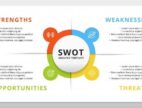What Is Digital Transformation And How To Carry It Out In Your Own Company
by Sumona Business Intelligence 21 June 2022

Nowadays, every company that aims at maintaining its status as a significant player in the market needs to embrace the necessity of implementing digital technology (or digital technologies) in their business processes.
This means rethinking your current business models, revisiting your strategic objectives, and reaching for advanced technologies in order to ensure your company’s growth and success in the competitive world of digital businesses.
What you need to do then is set out on a digital transformation journey. But, what is digital transformation in the first place? What steps need to be taken to carry it out in your own company? As these might be the questions that have already started to bother you, we are ready to offer you some answers. Stay with us.
In case you have doubts and need business transformation consultancy, the team of professional advisors working for Silicon Cities is ready to offer you help with your digital transformation strategy.
The definition of digital transformation
Digital transformation is defined as the process of integrating technology solutions into your business strategy with the goal of adjusting to the requirements of the market, improving operational efficiency, meeting customer demands, and, in general, facilitating your company’s overall development.

In order to devise a successful digital transformation strategy and follow its principles, you need to be very observant, flexible, and constantly ready to question the effectiveness of currently existing processes. Only when you are fully aware of what you aim to achieve can you recognize which aspects of your business activity call for improvement.
Going through digital transformations with the right mindset
For a better understanding of what a digital transformation process really is, the distinction between digitization and digitalization needs to be drawn.
Long story short, years ago, the great shift began, and the world moved from non-digital to digital. Using data in a digital form soon proved to be much more effective and convenient, so people were increasingly willing to make use of this technological breakthrough.

Although initially, digitization was about doing exactly the same things as once had been done with a pen and paper, sometime later the new trend evolved and transformed into digitalization.
The difference between the two terms lies in the degree to which digital solutions are used effectively, i.e. for the sake of improving things and simplifying processes, instead of just making them look fancier.
This is the key to understanding digital transformation properly — making true digital transformation efforts means working towards facilitation, improvement, and life-changing innovation. This can only be a result of a thorough analysis of your company’s status quo and choosing the right technologies and tools that are best tailored to your new digital strategy.
Successful strategies in digital transformation journeys
Pursuing new business models is usually carried out with the aim of accomplishing newly established business goals. These include a wide range of things, such as ensuring cost savings and revenue growth, improving customer experience (e.g. by providing better customer service) and organizational culture, and getting a competitive advantage in conducting various business operations.

This is why digital transformation initiatives are taken up. Still, adopting modern technologies in order to become a digital business requires digital transformation leaders to come up with a set of rules, principles, and guidelines that will help companies go through the transformation of their business process.
What are the most crucial components of such a successful strategy for digital transformation in your company? What steps should you take? Let’s have a look.
- Make sure you know your goals
- Think about your customers
- Be a strong leader
1. Make sure you know your goals
Ask yourself what your main objectives are and whether they are well-aligned with the desired business outcomes. For instance, do you want to upgrade your legacy systems?
Do you need better supply chain management? Is your company likely to benefit from such digital technologies as machine learning or cloud computing? If you are a managing director, don’t hesitate to involve your employees in such deliberations.
Deriving from the ideas and observations of people who know their business environment well may be a key element in diagnosing problems, recognizing the actual needs of your company, and choosing the suitable tool(s) in order to maximize business value.
Aside from relying on the extensive experience of your own staff, it is also worth engaging IT leaders, business data analysts, and software engineers who will support you in your endeavor to adopt artificial intelligence and boost the digital transformation in your company.
2. Think about your customers
Customer satisfaction has emerged as one of the most significant components of digital transformation projects carried out by many organizations and companies.
No wonder — it is customers who can deliver information on what kind of changes are worth introducing, what works well, and what urgently calls for attention when it comes to the quality of service. If you want to properly respond to customer requests and expectations, it’s advisable you gather digital data on how customer experience has been reshaping.
Also, think about implementing digital channels thanks to which you will be able to interact with your customers on a more personal level, and by this, better attract their attention. This — taking into account the profound influence of social media on people’s lives — seems to be inevitable in terms of establishing and maintaining a good relationship with your customers.
3. Be a strong leader
Digital transformation cannot be carried out successfully if your team lacks motivation and understanding. If you want your employees to be actively engaged in the process, you need to make sure they know why certain changes are urgently needed and what outcomes are expected as a result of implementing those changes.
They also need to see that you are equally dedicated to the whole project so that they can develop a similar, goal-oriented approach. Remember to always clarify your expectations, share your visions and react to any indication of doubts or uncertainty that may at some point bother your team. How can you provide support and encouragement?
For example, by providing time and space for regular discussions and brainstorming sessions, delivering updates and feedback, and creating an atmosphere of trust and security in your workplace environment.
This is especially vital when your employees feel threatened by the possibility of losing their jobs, or confused about their roles in the whole transformation process. In such a case, digital leaders need to reassure them that they are an indispensable part of the endeavor and that fostering business innovation is supposed to equip them with new skills and develop a higher level of expertise.
Working towards better results
Undeniably, businesses have bravely entered the digital world. Nothing surprising indeed — we are all living in the digital age, and we are somewhat forced to at least try to keep up with emerging technologies, adopt digital innovations, take up new digital initiatives and be perfectly able to skillfully operate a vast variety of mobile devices.
As many digital transformation examples show, enabling innovation in your business strategy and making the most of new technologies — in a wise and well-thought-out way — can help you significantly improve your products and services and take a major step towards a success-oriented future.
Additionals







































































































